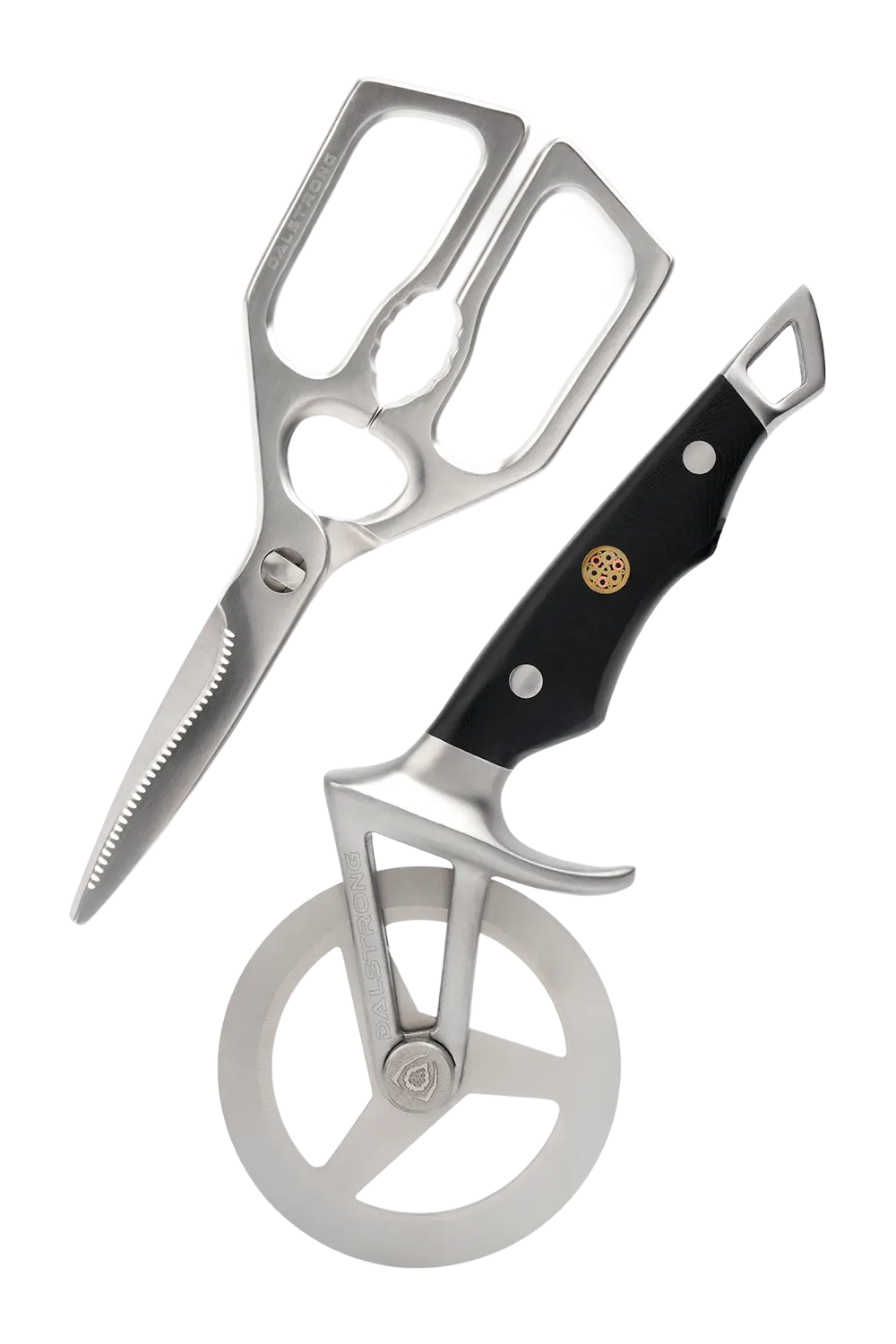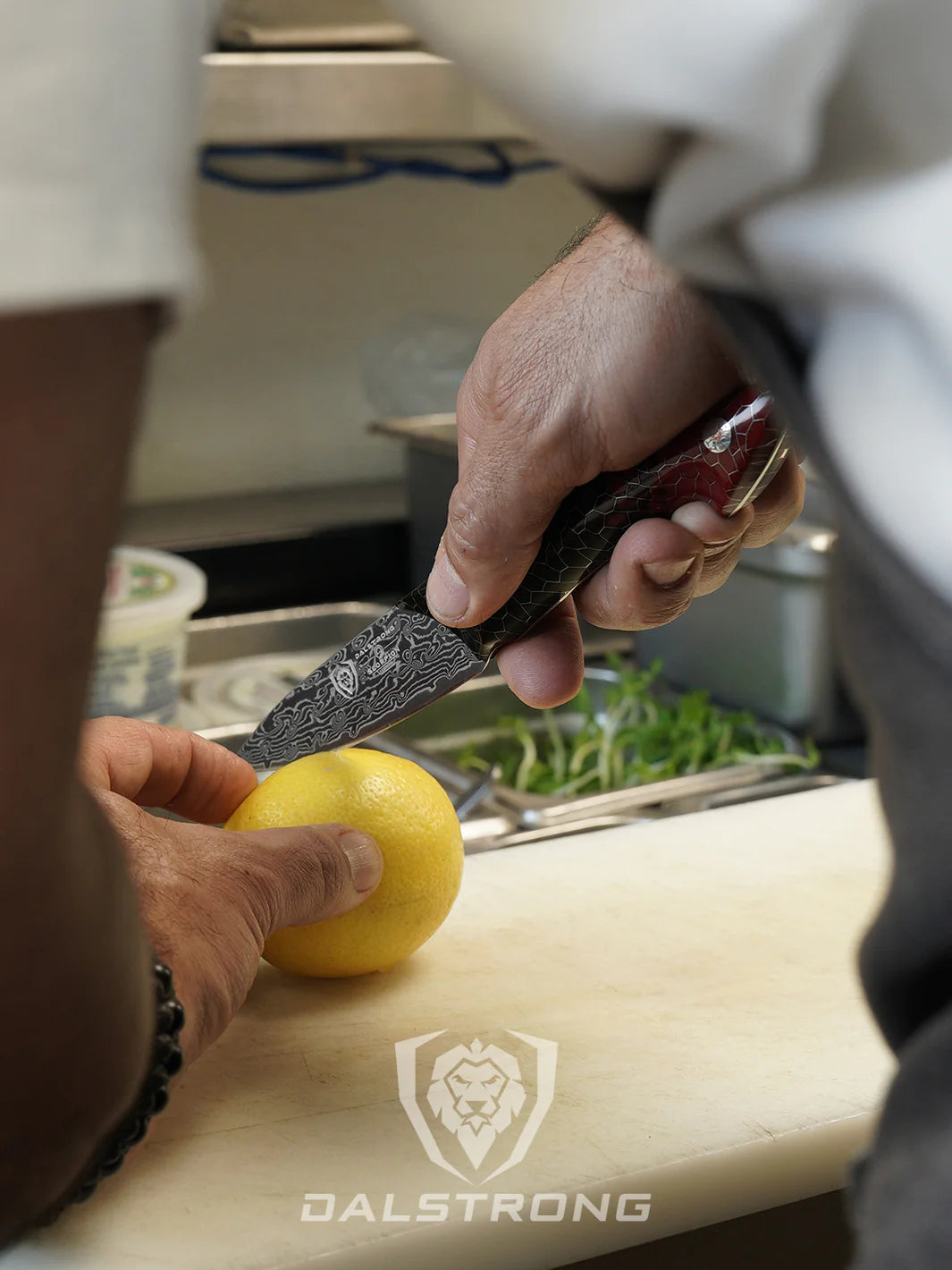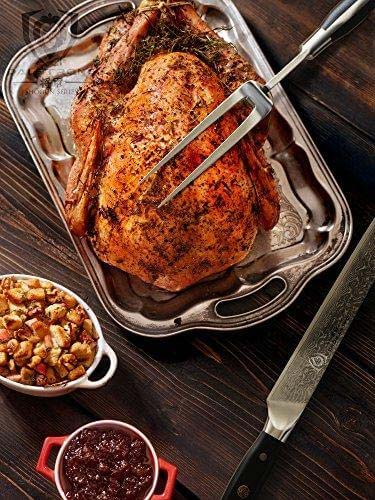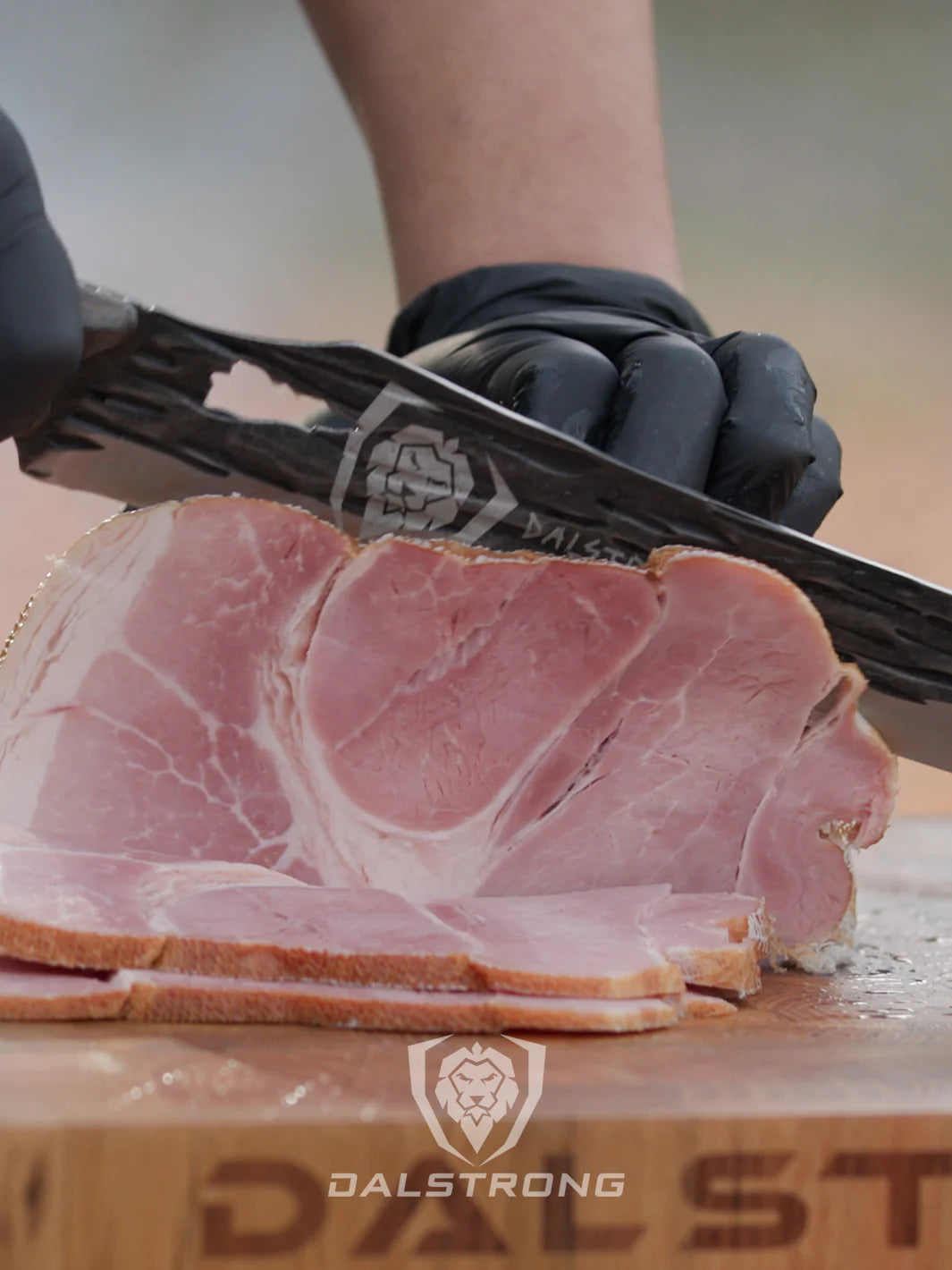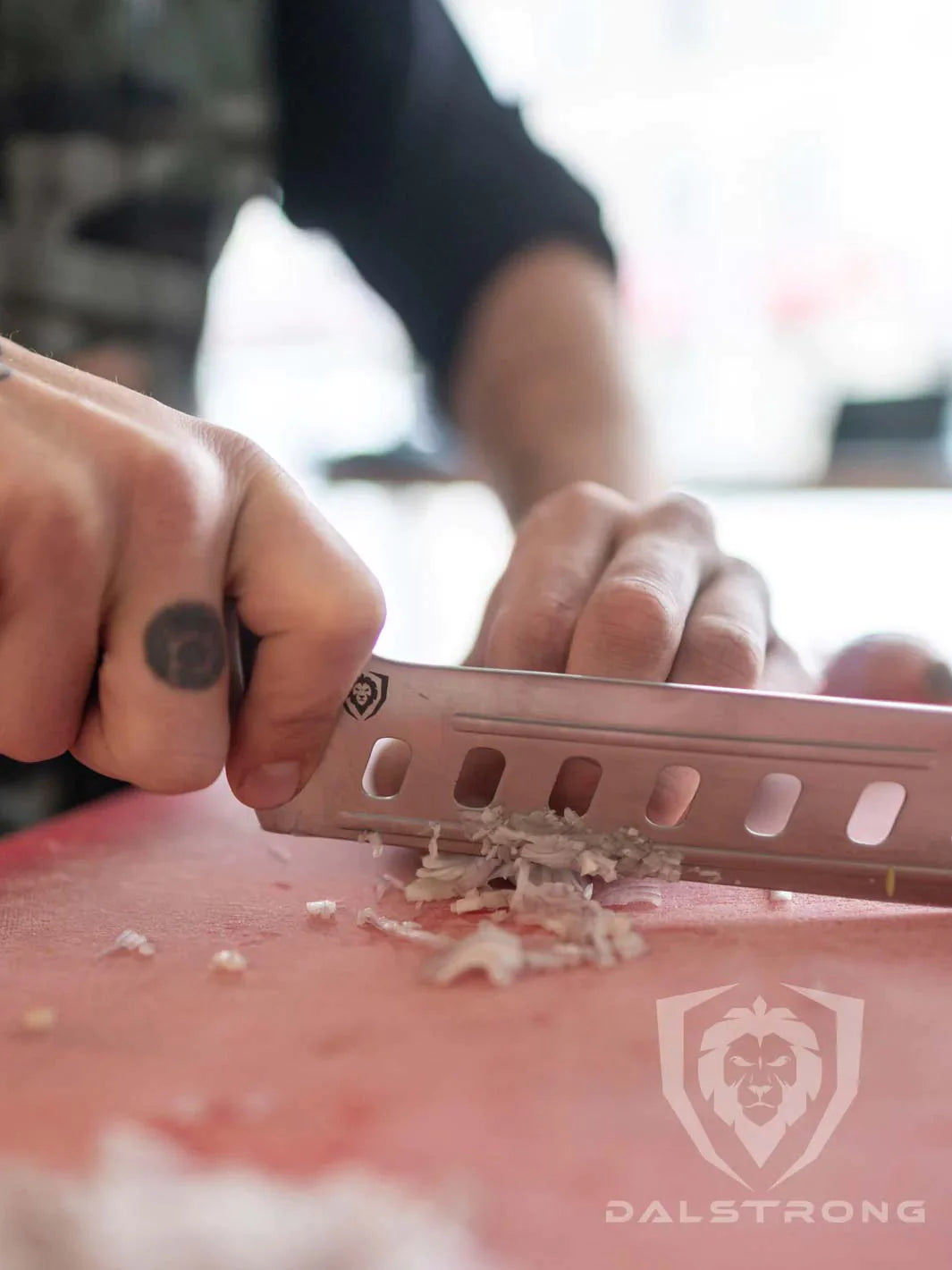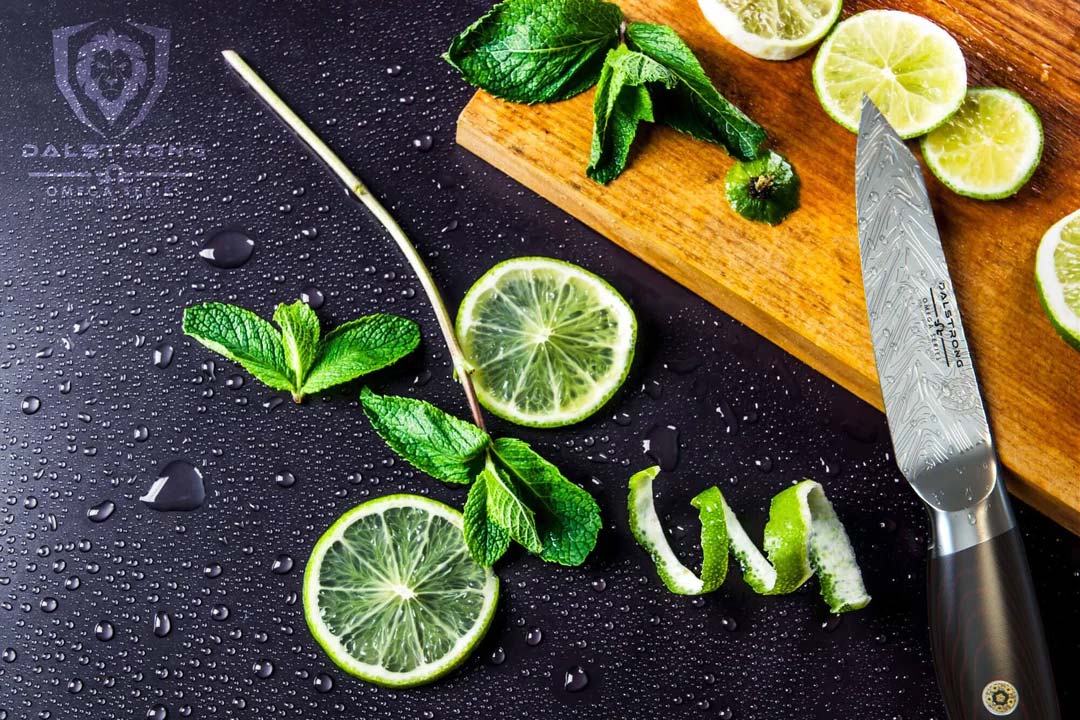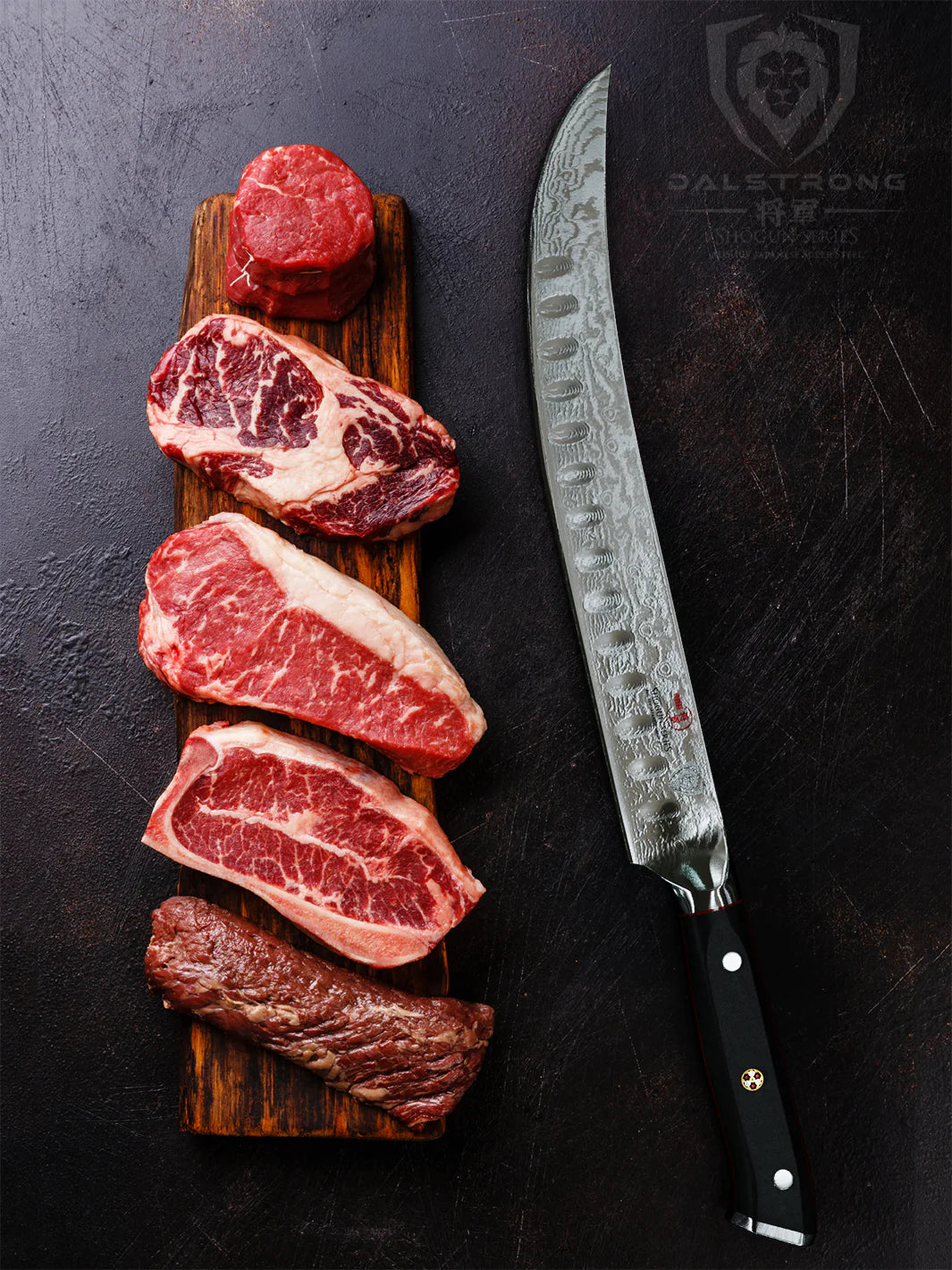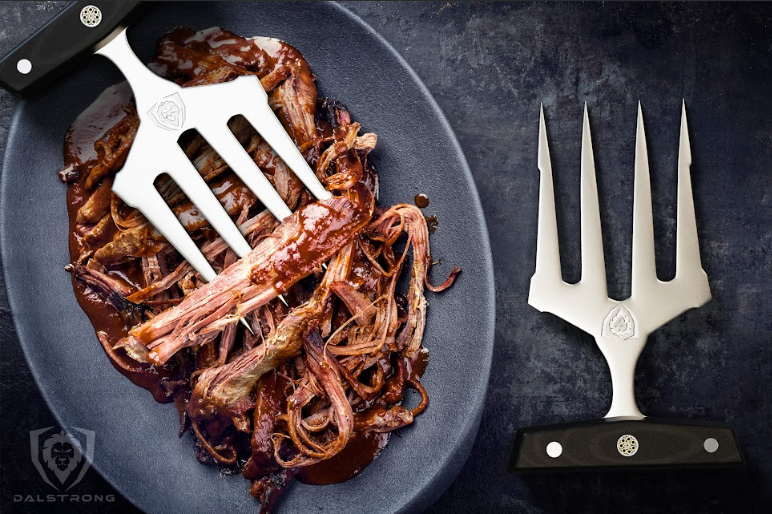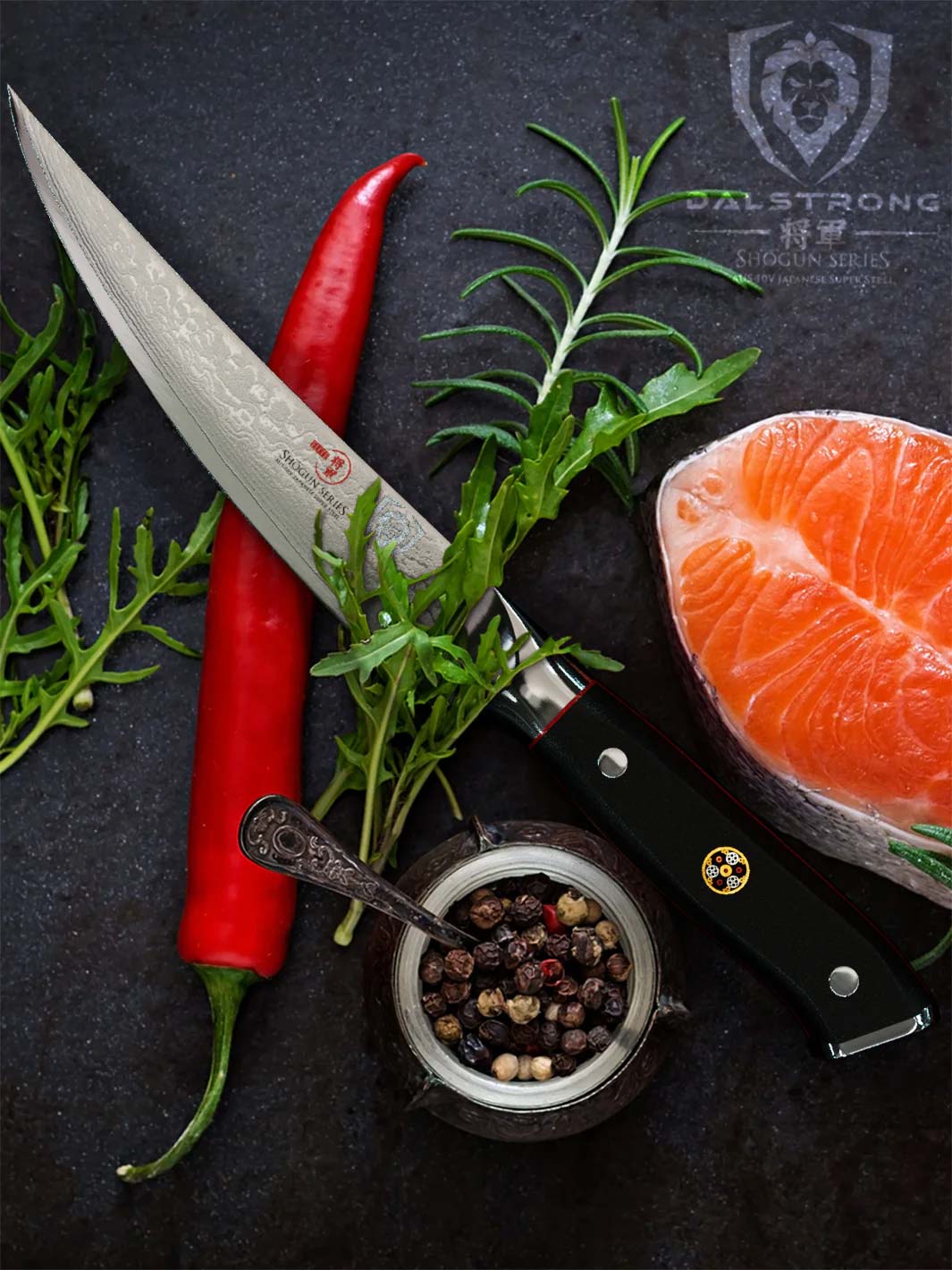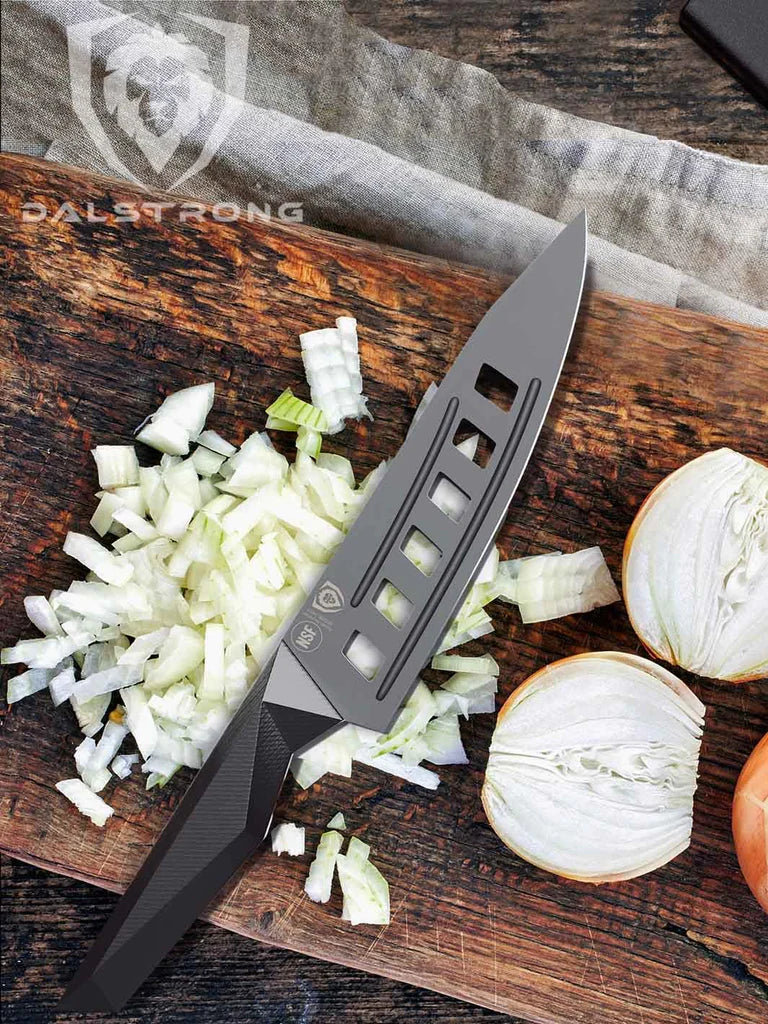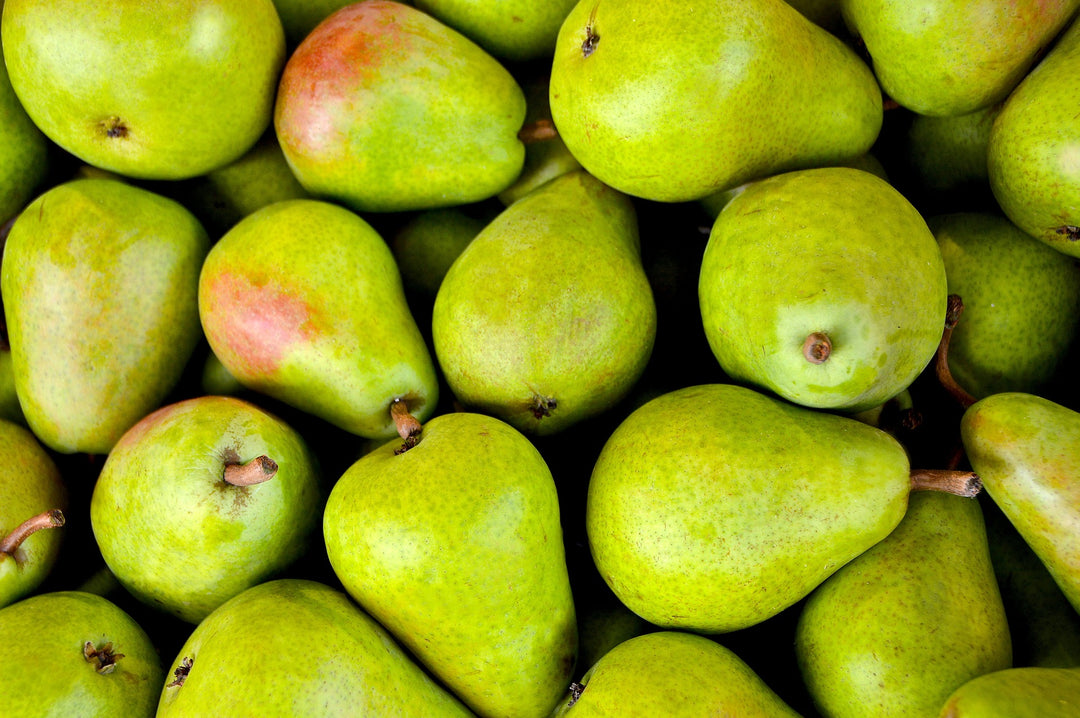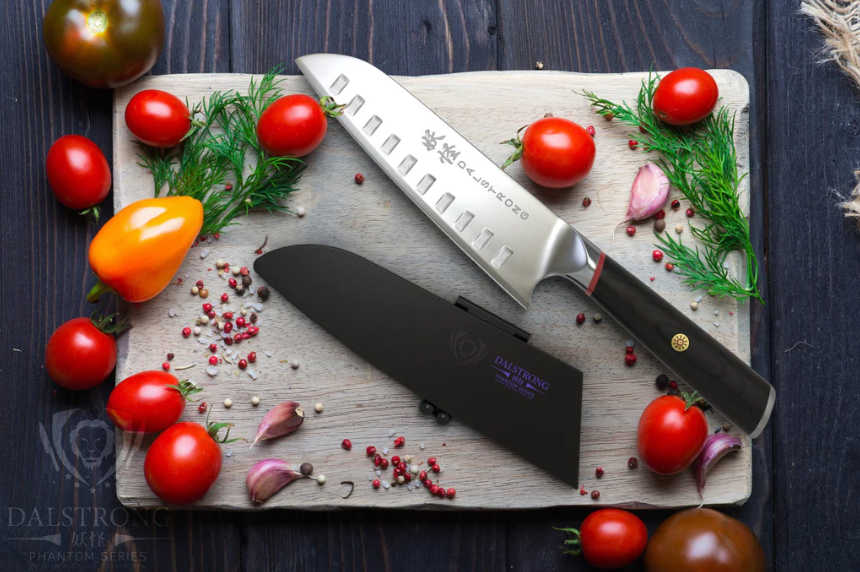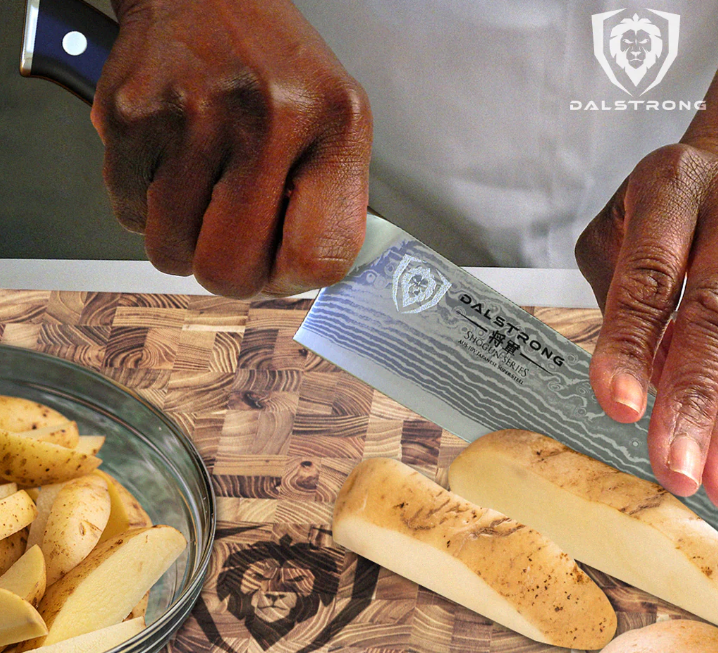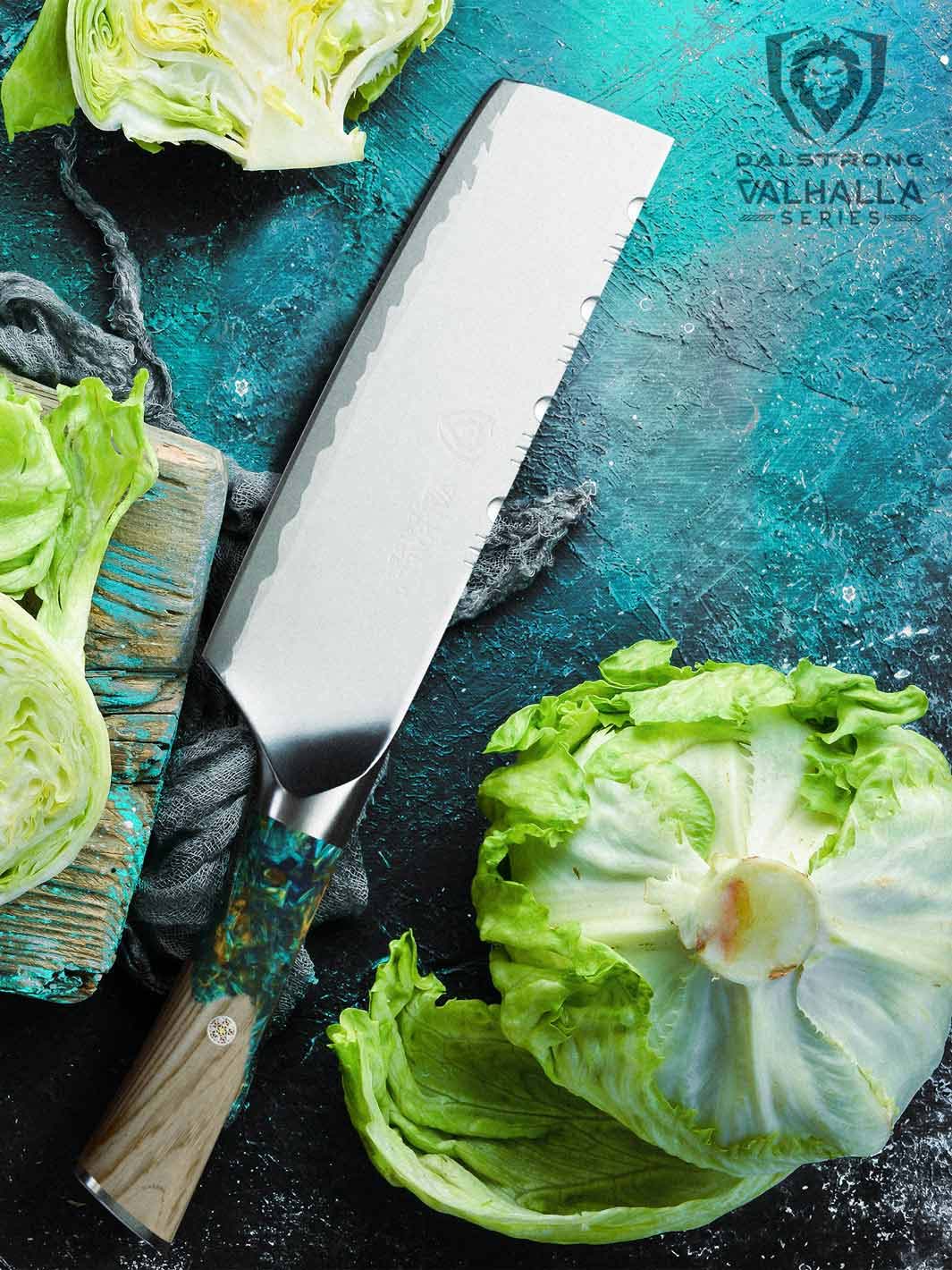Learn How To Chop Parsely In 5 Easy Steps
 Nakiri Knife 6.5"Frost Fire Series | NSF Certified | Dalstrong
Nakiri Knife 6.5"Frost Fire Series | NSF Certified | Dalstrong
Quick Overview: How To Chop Parsley
- Wash the leaves under cold water. Let the leaves air dry or dry them in a salad spinner.
- Once the leaves are dry, use a sharp chefs knife.
- Place the leaves at the tip of the knife and chop off the stems if you don’t wish to add them to your food.
- Use the remaining leaves and bunch them together.
- Follow a rocking motion chopping method for a quick and easy chopping process.
Have you ever mistaken parsley for coriander or mint leaves? I have, folks. But I’m bringing my culinary experience to you in this blog, so we don’t repeat the same mistakes. I mean, who wants to eat a delectable bowl of chicken and rice with chimichurri that is made with mint leaves? Not me. Today, let’s talk about all things parsley. All you need are the right kitchen tools to get yourself started.
1. Different Kinds Of Parsley

There are 4 types of parsley out there, and they’re all incredibly nutritious.
Flat-Leaf Parsley
Flat-leaf parsley is also known as Italian parsley. These parsley leaves are grown for culinary use. This type of parsley is used in a variety of salads and can be eaten whole. While parsley stems are edible, only the leaves are used for cooking. These leaves have a muted flavor profile compared to fresh parsley.
Curly Parsley
These leaves are used in cooking as the bigger pieces from the stem-up can be used for a variety of dishes. They’re incredibly versatile as they make excellent garnishes, too. It has less flavor than flat-leaf parsley but is quite nutritious.
Japanese parsley
Japanese parsley is quite popular in Asia, especially in China and Japan. These leaves are grown to be eaten like celery sticks as it has a bitter flavor to them. Japanese parsley is also known as Wild Parsley or purple-leaved Japanese Honewort.
Hamburg Root Parsley
This type of parsley is similar to the flat-leaf kind but has a very strong flavor to it. As the name suggests, these parsley leaves are grown in Germany. Other names for this type of parsley are Root Parsley and Dutch-Rooted Parsley.
2. How To Chop Parsley 
- Remove the rubber band and place the leaves in a colander and under cold water for a minute or two.
- Wash the parsley and dry it in a salad spinner or place it between two paper towels and gently rub the parsley by hand. You can also let the leaves air dry.
- Once you’re done drying the parsley leaves, it’s time to pick a knife and show those knife skills. (A sharp chefs knife, vegetable knife, Nakiri knife, or rocking knife is ideal since you’re going to follow a rocking motion chopping method).
- Place the parsley stems at the tip of the knife and quickly chop them off if you don’t intend to use them.
- Line up the remainder of the parsley bunch them together.
- Use your knife for a rocking motion chop to get even and precise cuts.
How To Store Uncut Parsley
- First, decide how much parsley you need to use while you cook.
- Place them in a jar with room-temperature water.
- Wrap a plastic bag over the leaves and tie a rubber band around the parsley stems.
- The easiest storage method involves placing the jar in the refrigerator. The leaves should be good for 1-2 weeks.
How To Store Cut Parsley Leaves
- Once the leaves are chopped to your desired consistency, place a damp paper towel in a lidded or air-tight container.
- Place the leaves on the damp paper towel and refrigerate.
- Use the parsley within a week of refrigeration.
3. Dalstrong Tools You Need To Chop Parsley
1. Rocking Cleaver Knife 12" Gladiator Series | Limited Edition | NSF Certified
The blade on this rocking cleaver knife is made with forged-high carbon 7CR17MOV steel that is heat treated and hardened at 56 Rockwell. The scalpel-like sharpness comes from the blade that is hand-sharpened at a staggering 16-18 degrees to help to imitate the rocking motion chop method.
PROS:
- A curved blade is a bonus for when you line the parsley stems at the tip of the knife.
- Ultra-premium quality G10 handle that is designed to last you a lifetime.
- Ergonomic grip at the tip of the knife and near the bolster.
- Equipped with Dalstrong’s ABS PerfectFit sheath.
CONS:
- If you haven’t used a rocking knife before, this sharp knife could seem a little intimidating.
- If you prefer using a chef’s knife, then this knife might not be the ultimate fit.
2. Nakiri Knife 7" Vegetable Knife | Centurion Series

If you’re ready to take it up a notch, this Nakiri vegetable knife is one to bag. Razor-sharp and precision-forged, thanks to the wear-resistant Swedish Sandvik 14C28N steel that is hardened at 58+ Rockwell for all the robustness you need.
PROS:
- Hand-polished for sturdiness when you work with bigger pieces of parsley leaves.
- A full tang blade with an edge that is hand-sharpened to a striking 12-14º degree.
- Tempered with precision for when you want to cut your parsley more finely.
- The handle is ergonomic and made with fiber-resin material that is impervious to cold, heat, and moisture.
CONS:
- If you’re a novice in the culinary world, a 7” Nakiri knife might seem a tad intimidating.
- You may prefer working with rocking knives and chef knives instead.
3. Chef's Knife 8” Valhalla Series

This chef’s knife from the Valhalla series is a personal favorite. Made with 5 layers of stainless steel that are sandblasted and hardened at 60+ Rockwell for a sturdy grip as you chop parsley. The blade is stain-resistant and quite easy to clean compared to other chef knives and is incredibly low in maintenance, which is a bonus if you’re a busy bee like I am.
PROS:
- Tempered and tapered with precision for dexterity and flexibility.
- A stabilized wood handle made with quality blue resin.
- Dishwasher-safe and built for busy kitchens.
- Resistant to extreme cold and hot temperatures, which adds to this knife’s durability.
CONS:
- Could be outside of the budget for some folks.
- If you prefer a stainless steel handle, knives from Dalstrong’s Crusader series could be a better fit for you.
4. Cleaver Knife 7" Phantom Series

Be it chopping, dicing, and mincing meat, vegetables, or herbs, this cleaver knife from the Phantom series can get the job done with ease. Made with Japanese AUS-8 steel that is hardened at 58 Rockwell, this premium quality knife has both precision and sharpness for any culinary task.
PROS:
- The blade has levels of chromium which gives it its stain-resistant nature.
- The polished spine offers a comfortable pinch grip which is a phenomenal trait to have in any knife.
- The handle is made with Pakkawood which is imported directly from Spain, truly justifying the premium make of this knife.
- The sanitary build of this sharp knife is ideal for home cooks and seasoned chefs that work in busy kitchens.
CONS:
- If you prefer rocking knives or chef’s knives, a cleaver might not be the perfect fit. But this versatile and sharp knife can elevate your culinary experience.
- You may want a shorter blade length if you work with microgreens and herbs that don’t have large leaves.
5. Kiritsuke Chef's Knife 8.5" Shogun Series ELITE | Dalstrong

Kiritsuke chef knives are perfect for folks wanting to take their knife skills up a notch. This knife is perfect for vegetables, microgreens, and herbs. Made with a Japanese AUS-10V super steel cutting core that is hardened at 62+ Rockwell, this knife raises the bar when it comes to chef knives.
PROS:
- Hand-finished using the Dalstrong Diamond Detailing technique which gives the blade a ruthlessly sharp finish.
- Engineered for a zero-balance design, which keeps the knife angled yet sturdy.
- The ergonomic handle offers superior control and dexterity.
- The triple-riveted handle adds durability to this knife.
CONS:
- Some folks may prefer Nakiri knives over Kiritsuke knives.
- If you steer toward western chef knives, this knife might not be the best fit.
4. Frequently Asked Questions
What Part Of Parsley Do You Chop?
Parsley can be eaten whole with the stems if that’s how you like it. If you plan on making a chimichurri sauce, using just the leaves would be the best way to go about it. But, if you’re big on pastes, such as a pesto parsley paste, using the stems is ideal. The stems give the sauce more texture and some crunch. The stems can also be used for soups, stocks, and salads.
How Do You Remove Stems From Parsley?
Once you’ve washed and dried the parsley, line them up at the tip of the knife and cut them in one motion. You want to give it a sturdy blow at an angle that is comfortable for you. If you want to remove the stems near the leaves, use your fingers to gently bunch the leaves together till the stems show up, and cut them diagonally. This will give you a clean batch of parsley leaves without the stems.
Do You Wash Parsley Before Chopping?
Unless you’re working with pre-washed and packaged parsley, it’s best to wash them. To do this, place the leaves with stems in a colander, and run them under cold water for a minute or two. Make sure that the water isn’t in full force, as it could break the leaves away from the stem. Then, you can let the leaves air dry or dry them in a salad spinner or between two sheets of dry paper towels.
How Do You Clean And Chop Fresh Parsley?
You can clean parsley by placing it in a colander and running it under cold water. Once the leaves are dried up, line them up on a sturdy chopping board. Start by cutting off the stems at the bottom, these are long, green, and string-like. Then, gently hold the leaves together and cut off the stems that are attached to the leaves if you don’t intend on using them. Lastly, use the chopped-off stems in soups, salads, or to make vegetable stock.






















































































































